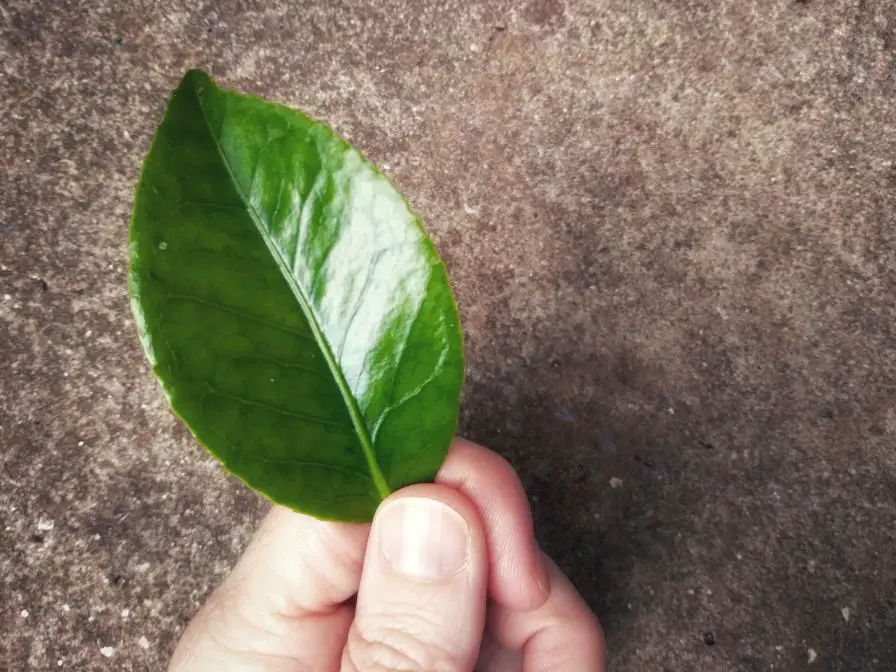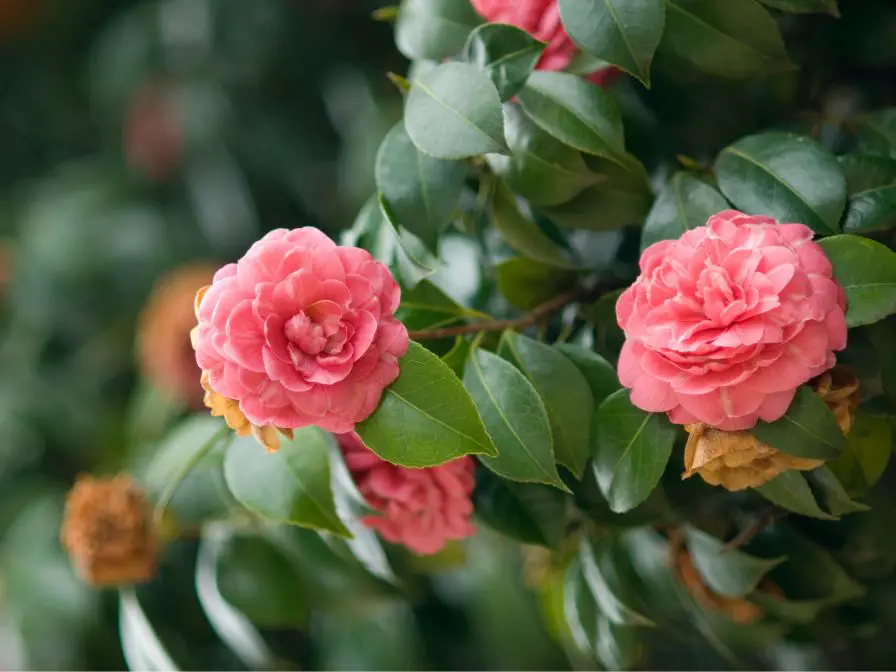Searching for plants that have a lot of benefits. Well, you would have thought every indoor plant has benefits. Whether these are ornamental benefits or consumption benefits. Your search ends here. Because camellia leaf plants are such plants.

Camellia leaf plants are very common indoor plants. These are precious items. Because these are easy to plant and care for, as well as you would have many benefits. That’s why we are going to tell you all about camellia leaf.
Camellia Plants
Camellia plants are also known as camellia leaves. It is because the leaves of these plants are used as tea. Young and new leaves are used for green tea, older leaves are used for black tea, and also buds are used for white tea. These plants symbolize adoration and love. All of its varieties are non-toxic.
Belonging to the flowering plant camellia plants are from the tea family (Theaceae). They are native to eastern and southeastern Asia and are prized for their beautiful, showy flowers that bloom in winter and early spring.
Camellias are popular ornamental plants and are widely cultivated for their attractive foliage and flowers. Some species are also used for tea production, as well as for oil extraction. The plants prefer acidic soil and partial shade, and are frost-tolerant but do not like hot, dry weather.
As mentioned earlier, there are many benefits of planting camellia leaf plants. Well, here are some of the important ones as follows:
Ornamental Value

Camellia plants have beautiful, showy flowers that bloom in winter and early spring, providing a pop of color during a season when most other plants are dormant. They are also attractive evergreen shrubs with glossy leaves, making them an attractive addition to any garden.
Environmental benefits
Camellias can provide habitat and food for wildlife, including birds and insects. This process makes pollination good and effective. They also help to improve air quality. It is because like other plants it releases oxygen and absorbs carbon dioxide.
Health benefits
Camellia leaves can be used for green, black, and white tea. It has antioxidants in it that keep the person’s body safe from the harm caused by free radicals. It has also been associated with a reduced risk of cardiovascular disease and some forms of cancer.
Economic benefits
Camellias are popular ornamental plants and can fetch a high price on the market. Some species are also used for tea production and oil extraction, which can provide additional income for growers. So you can earn an extra penny as another source of income.
Easy to Care For
Camellia plants are relatively easy to care for and can thrive with proper watering, mulching, and occasional pruning. They are also relatively pest- and disease-resistant, making them low-maintenance ornamental plants.
These all qualities make the camellia leaf plant one of the best indoor plants to be planted. It is because even if these benefits were not there, its usefulness makes this plant very good for all gardeners whether they are beginners or they are experts. You can try it easily and effectively.
Planting Camellia Plants
Planting camellia leaf plants is quite easy. But you would have to follow some of the basic steps so that your efforts, energies, and investment may not go in vain for little carelessness. That’s why you would have to follow the following steps to plant camellia plants.
Choose a Suitable Location
Camellias prefer a spot with partial to full shade, well-drained soil, and protection from strong winds. These plants can survive easily in the US hardiness zones from 6 to 9. The temperature ranging from 10 to 90 F is good for the growth of the camellia plants.
Prepare the Soil
By adding organic composed matter, you would be able to secure the nutrient requirement well. You can use any of the gardening or potting soil. Natural compost will help the roots in setting well.
Digging a Hole
The hole dug for the plantation of camellia should be enough to hold the root ball. Make sure that it can handle the root ball easily and when planting it doesn’t break the roots of the camellia plants. Dig deep enough that it can hold the plant up to the stem of the camellia plant.
Plant Setting
Make sure you get the plant easily into the hole. You need to remove the plant from the container and get the root ball out. Now place the camellia plant in the hole In a way that the root ball is below the surface. Tap the soil gently around the stem of the plant so that it becomes firm.
Water thorough
After planting, water the camellia thoroughly. Water the plants regularly, making sure not to over-water the plant. This early planting water will help the camellia plant establish its root well.
Mulching
Mulch around the base of the camellia to conserve moisture, regulate soil temperature, and control weeds. Mulching is a widely practiced idea for gardeners. In case of a drought problem, mulching helps a lot in maintaining moisture.
By following the above-mentioned steps you would be able to plant the camellia leaf plants successfully. From that onwards, you just have to take good care of them.
Taking Care of Camellia leaf plants
Camellias are popular ornamental plants that are prized for their beautiful flowers. You just have to follow some of the basic steps to make sure that these plants grow smoothly. To care for camellias, follow these guidelines:
Water requirements of Camellia Leaf
Camellias need moist, well-drained soil. Water regularly, making sure to keep the soil evenly moist, but not waterlogged. So keep the balance in watering this plant. Excess water may cause root rot for this plant.
Light requirements
Camellias prefer filtered sunlight or partial shade. Protect them from strong, direct sunlight, especially during the hot part of the day. Direct sunlight can harm the plant. You can place the camellia plant near the window. If planted in the pot, the movement will be much easy.
Soil and fertilizer requirements
These plants lie in slightly acidic soil. PH can be between 5.5 to 6.5. If necessary, adjust the pH by adding peat moss or sulfur to the soil. You can add compost to meet the nutrient requirements.
Fertilize camellias with an acid fertilizer specially formulated for camellias or azaleas. You can use the fertilizers during the growing season after 4 to 6 weeks. Use balanced fertilizers for the camellia plants.
Pruning Requirements
Prune camellias after flowering to maintain their shape and encourage new growth. Remove dead, diseased, or damaged wood, and cut back any shoots that are growing too tall. Pruning will make the plants stronger. Because it helps in developing resistance to pests and diseases.
Protection from Pests and Diseases
Camellias are susceptible to pests such as scale insects and aphids, as well as diseases such as powdery mildew and root rot. Keep an eye out for any signs of trouble and take action promptly if necessary. You can consult with nearby horticulturists if there is any climate or area-specific disease or pest there.
Harvesting the Camellia Leaves

As camellia leaves are used for many purposes. These are harvested with great interest. That’s why we are going to tell you about harvesting the camellia leaves. So, follow the following steps:
Harvest the leaves when they are fully mature and before they start to yellow or wilt. As these can be used for green tea also, you can harvest them at that point in time and then let them dry so that you can use them for green tea. Otherwise, pluck older leaves for making black tea.
Rinse the leaves gently to remove any dirt or debris. Do this gently so that you might not end up losing the camellia leaves. Spread the leaves out in a single layer on a clean, dry surface and allow them to air dry completely. This may take a few days.
Storing Camellia Leaves
Once the leaves are dry, store them in a cool, dry place in an airtight container, such as a glass jar or plastic bag. To maintain the quality of the leaves, store them away from light and heat and check them periodically for signs of moisture or mold.
Camellia leaves can be stored for several months, but their flavor and quality may decline over time. It’s best to use them as soon as possible for the best flavor. So use it regularly to enjoy the taste and flavor of the camellia leaf plants. These leaves make quite tasteful tea.
In a nutshell, the camellia plant is a unique blessing of nature. It is because this plant provides ornamental value to the indoor grower, as well as provides tea. Which is quite tasty. Moreover, this plant is easy to grow and take care of.
You just have to make sure that the basic requirements are met, and then you are good to go. Because once this plant has been planted according to guidance. Then no one can stop it from growing and providing benefits.

